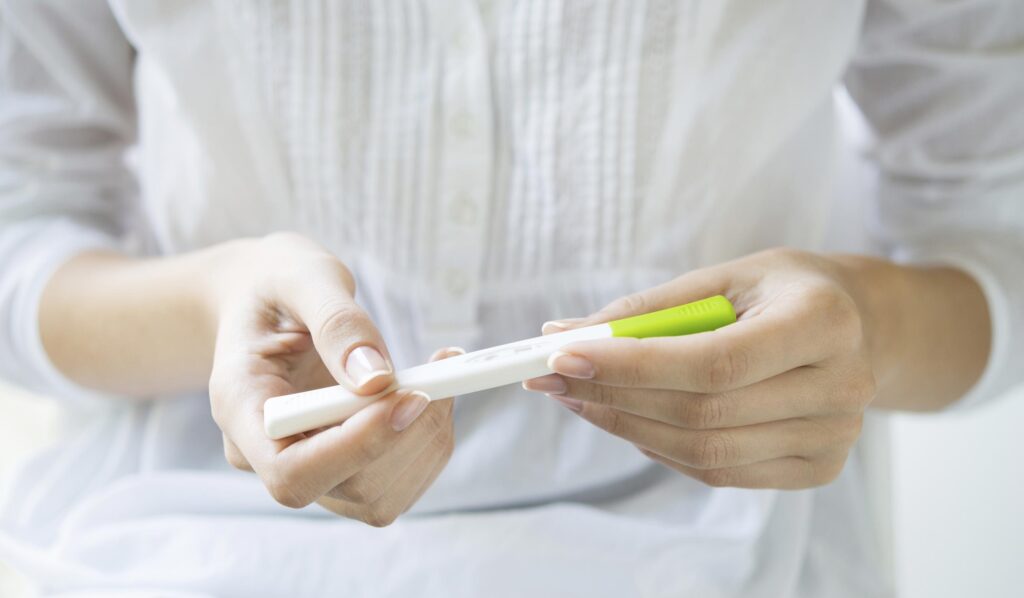
Title: Preventing pregnancy loss after frozen-embryo transfer — a comparison of three protocols.
Conclusion: Currently, there is no definitive evidence that there is a superior method of uterine method for frozen embryo transfer. We are very comfortable with our current regimen.
On September 21st, the physicians at Reproductive Partners, La Jolla sat down at our monthly journal club to discuss two important topics. At Reproductive Partners, we are committed to providing the most up to date care. Sometimes this means questioning our own practices to ensure that we continue to have the highest standards. One of the topics we had decided as a group earlier in the month to look at was our frozen embryo transfer protocol.
A frozen embryo transfer involves preparing the endometrium, or the lining of the uterus, until it is ready to accept a previously vitrified embryo. This preparation can be done a number of ways, which is reflected in the 5-10 different protocols that are published about this process. Here at Reproductive partners we usually give our patients estrogen skin patches at the start of a period to prevent ovulation and grow the lining until a certain thickness. Once that goal is reached, we start the patient on progesterone supplementation to create the necessary changes in the endometrium that make it receptive to the embryo. On a pre-determined day, we then transfer the embryo when it and the lining are synchronized to maximize the chances of implantation. While we are very proud of our implantation rates (i.e. the number of pregnancies per embryo transferred), we thought it was best to update ourselves.
So we looked at two different articles. One systematic review article that was published recently as well as a specific large restrospective trial performed in Finland and Denmark titled, “Pregnancy loss after frozen-embryo transfer — a comparison of three protocols.” (Full references below.) In the second article, Tomas et. al. looked back at almost 4,500 frozen embryo transfer cycles that were performed using three different treatments. These included the programmed cycle that we prefer and is described above, a “natural cycle” where no hormones are given and we rely upon the patient detecting her surge in her urine to time the embryo transfer or a “modified natural cycle” where we induce an ovulation by using an hCG trigger injection to be more sure of the start of progesterone exposure, which is critical to the success of the cycle. The paper’s analysis was appropriate and the results showed that of the three type of methods analyzed, the programmed cycles and modified natural cycles had the higher pregnancy rate per embryo transfer compared to the natural cycle (35% vs. 26%). However, we did see that those cycles had a higher clinical pregnancy loss rate after a positive pregnancy test (33-42% vs. 22%). The net result was that all three groups had similar live birth rates per embryo transfer (20-23%).
It is difficult to know why the pregnancy loss rate was higher in those two groups. The age of those groups was higher, but overall the difference of 1-2 years in an overall young cohort of patients under the age of 35 makes this unlikely to be the major factor. More likely possibilities are that in the modified natural cycles giving hCG before full maturation of the follicle can cause poor hormone production by the ovary to support the pregnancy and in the programmed cycles their hormone regimen may not have been optimal. With our regimen we have had excellent results with no increase in miscarriages. These results can be taken with caution as this data was collected between the years 2006 – 2010 when the practice of embryo freezing was different and success rates are much improved since that time. However, the conclusion of this paper as well as the review is summarized in the following quote from the review article, “We conclude that it is not possible, based on the current published literature, to recommend one endometrial preparation method in FET over another.”
We feel very comfortable with our frozen embryo transfer protocol and at this time there is no evidence to suggest we should change it. The advantages of our current system are that it allows us to have better control over the timing of the transfers which benefits the patients as well as our laboratory. Quality control is maximized by not having too many transfers in one day and thus overloading our already hard working laboratory staff. Also, we feel better knowing the exact day and timing of the progesterone so that we are transferring the embryo at the best time to synchronize with the endometrium. New techniques to evaluate the uterine lining indicate the “window of receptivity” is quite narrow and can even vary in its timing among individual patients.
Michael V. Homer, MD
Senior Fellow, Reproductive Endocrinology, Infertility
University of California, San Diego
La Jolla, CA
References:
Tomás C, Alsbjerg B, Martikainen H, Humaidan P, Pregnancy loss after frozen-embryo transfer — a comparison of three protocols. Fertil Steril. 2012; 98(5):1165-9
Link to Tomas’ Study on Pubmed.
Groenewoud ER, Cantineau AE, Kollen BJ, Macklon NS, and Cohlen BJ, What is the optimal means of preparing the endometrium in frozen–thawed embryo transfer cycles? A systematic review and meta-analysis. Human Reproduction Update. 2013; 19 (5): 458–470
Link to Groenewoud’s Study on Pubmed.
Our skilled fertility specialists are here to help. Contact us today and let’s discuss the next phase of your fertility journey.